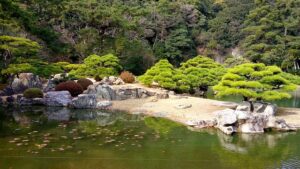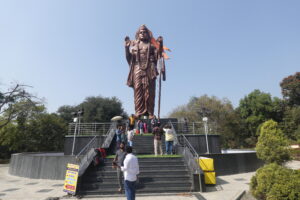Rock Climbing in Sedona is only known to real hikers? Are you the one? You must know about it. Whether you’re just starting or you’re a seasoned climber, Sedona offers some of the most beautiful and diverse climbing opportunities you’ll find anywhere. In this post we will go through a complete guide for rock climbing in Sedona for beginners as well as pros.
Rock Climbing in Sedona: A Guide for Beginners and Pros
Is Rock Climbing in Sedona worth it?
Sedona’s landscape is a dream come true for climbers. The towering red sandstone spires, known as “the Cathedral Spires,” line the desert canyon landscapes, offering both traditional and sport climbing routes. The warm Arizona weather and the breathtaking views make climbing here an experience that’s as rewarding for the soul as it is for the muscles.
Best Areas for Rock Climbing for Beginners in Sedona
If you’re new to rock climbing, Sedona has plenty of routes that are perfect for getting your feet wet.
1. Bell Rock
One of Sedona’s most iconic formations, Bell Rock, offers some mellow climbing routes that are perfect for beginners. The approach is fairly simple, and the views are unbeatable. It’s also a great spot to get your bearings and try out some bouldering (rock climbing without ropes) before stepping it up a notch.
2. Doe Mountain
Doe Mountain is another great place for beginners. The climb here is more of a hike with a little rock scrambling thrown in, but you’ll be rewarded with stunning views. If you’re looking for an introduction to climbing, this is a perfect way to ease into the sport while soaking in the beauty of the landscape.
3. The Pumphouse
For those looking for a mix of sport climbing and trad climbing (traditional climbing), the Pumphouse is a good option. The routes are forgiving for beginners but still fun and challenging enough to help you build your skills.
4. Little Horse
Little Horse offers an accessible climbing experience, with routes that are great for climbers just starting to build their confidence. The climbs here are not too difficult, and the approach is relatively easy. The rock is solid and offers a good mix of climbing styles, including sport climbing and scrambling. The views from the top of Little Horse are stunning, making it a perfect place for a beginner to take in the beauty of the red rocks while enjoying an easy, enjoyable climb.
Best Spots for Rock Climbing for Mediocre Climbers in Sedona
Here are a few climbing areas that will feel just right if you’re comfortable on the rock but not yet climbing the hardest grades.
1. Thunder Mountain
If you’re up for something with a bit more adventure, Thunder Mountain has a variety of moderate climbs that offer great exposure without being too difficult. The routes here are fun and allow you to test your endurance and technique, making them perfect for climbers who want a challenge but don’t want to risk biting off more than they can chew.
2. Chapel Butte
Chapel Butte is an excellent spot for those looking to combine some hiking with their climbing. The routes are moderate, and the summit offers spectacular panoramic views of the surrounding area, including the iconic Chapel of the Holy Cross. The climbs here are fun and offer a bit of exposure without being overwhelming. It’s a great choice if you’re looking for a mix of technical climbing and scenic beauty.
3. Rockefeller
Rockefeller is a relatively quiet area with a variety of sport climbing routes that offer moderate challenges. The routes here are a bit longer and more technical, making it a perfect spot for climbers who are ready to step up their skills without tackling something too difficult. The approach is short, and the views along the way are beautiful, making it a pleasant experience for climbers who enjoy a combination of adventure and tranquility.
4. Casner Canyon
Casner Canyon has a selection of fun routes that cater to climbers who are beyond the basics but still want to avoid technical routes. The canyon offers a mix of sport and trad climbing, with routes that are moderate in difficulty. The variety of routes allows climbers to practice different techniques and gradually improve their skills. Casner Canyon is also a bit off the beaten path, so it tends to be less crowded than some of the more popular spots in Sedona.
The Toughest Rock Climbing Spots in Sedona: Only for the pros
Sedona also caters to experienced climbers looking for more of a challenge. If you’re looking for something more technical or a bit more thrilling, these spots will keep you on your toes:
1. The Cathedral Spires
If you’re an experienced climber, the Cathedral Spires are a must-do. These formations tower above the surrounding landscape and offer challenging routes with serious exposure. The rock can be tough, so it’s recommended to have solid climbing experience before tackling these.
2. Mace
The Mace is one of Sedona’s most famous climbs and certainly not for the faint of heart. It’s a stunning spire that offers sport and trad routes, but the exposure and technical difficulty make it a more advanced climb. The views from the top are absolutely worth the effort.
3. Courthouse Butte
Courthouse Butte is a large formation with a variety of routes for seasoned climbers. The difficulty varies depending on which side you tackle, but this formation is known for offering long, strenuous routes and stunning desert views. The ascent is demanding but incredibly rewarding.
4. The Grotto
The Grotto is a unique spot that offers steep, technical climbing through deep sandstone features. Routes here are less trafficked and provide a challenging mix of sport and trad climbing. The Grotto’s climbs are steep, offering climbers the opportunity to work on their endurance and technique in a somewhat secluded area. Some routes are overhangs, which test both power and technique, while others involve technical face climbing. If you’re looking for a quieter, more rugged spot, this area provides a solid challenge.
Things you need to know for rock climbing in Sedona
1. Permits:
Unlike some other climbing destinations, Sedona doesn’t require permits for most of the popular climbing areas, but always check for any seasonal restrictions or closures. It’s also a good idea to stay informed about local climbing ethics and guidelines to preserve the stunning landscape.
2. Best Time to Climb:
While Sedona enjoys great weather year-round, the best time to climb is during the fall and spring months when temperatures are cooler and more comfortable. Summer can be scorching, so it’s best to climb early in the morning or late in the day.
3. Guides and Rentals:
If you’re new to climbing or want to explore Sedona’s more difficult routes, there are plenty of local guides and climbing schools that offer guided tours and equipment rentals. These are perfect for getting the most out of your adventure and ensuring safety.
Never Underestimate These Tips
1. Stay Hydrated:
Sedona’s dry, desert climate can catch you off guard. Be sure to carry plenty of water, especially when you’re climbing in the warmer months.
2. Dress Appropriately:
The weather can change rapidly in the desert. While it’s often sunny, it can get chilly early in the morning and evening. Wear layers, and don’t forget sunscreen.
3. Respect the Environment:
Sedona’s natural beauty is part of what makes it such a great climbing destination. Make sure to follow Leave No Trace principles and respect the surrounding wilderness. Stick to established trails, and pack out everything you bring in.
Conclusion
Whether you’re a newbie or a seasoned climber, Sedona offers something for everyone.
The combination of incredible rock formations, perfect weather and awe-inspiring views make it an unforgettable place to climb.
So, grab your gear, put on your climbing shoes, and get ready to experience some of the best climbing in the country.
FAQs =》
Q1. Do I need to be an expert climber to enjoy Sedona?
Ans. Not at all. Sedona offers climbs for all skill levels. Beginners can enjoy easier routes at places like Bell Rock and Doe Mountain, while more advanced climbers can challenge themselves on the Cathedral Spires or The Mace. Whether you’re new to the sport or a seasoned pro, there’s something for you.
Q2. Is rock climbing in Sedona safe?
Ans. Sedona is a generally safe climbing destination, but as with any outdoor activity, safety precautions are crucial. Always climb within your ability, wear appropriate safety gear, and consider hiring a guide if you’re unfamiliar with the area or new to climbing. Be aware of changing weather conditions and respect local climbing guidelines.
Q3. Are there any special climbing restrictions in Sedona?
Ans. Yes, some areas may have seasonal restrictions to protect wildlife, such as during bird nesting seasons. Always check in advance for any closures or regulations. Additionally, be sure to follow Leave No Trace principles to keep the environment pristine.
Q4. What is the best way to get to the climbing areas?
Ans. Many of Sedona’s climbing spots are accessible by car, and some require short hikes to reach the base of the routes. Be sure to check your climbing destination’s access details, and consider using a local map or guidebook for specifics on trailheads and parking.
Q5. What should I bring on my climbing trip?
Ans. Essential items include plenty of water (especially in the warmer months), sunscreen, comfortable climbing shoes, a helmet, a chalk bag, and layers to adjust to temperature changes.


